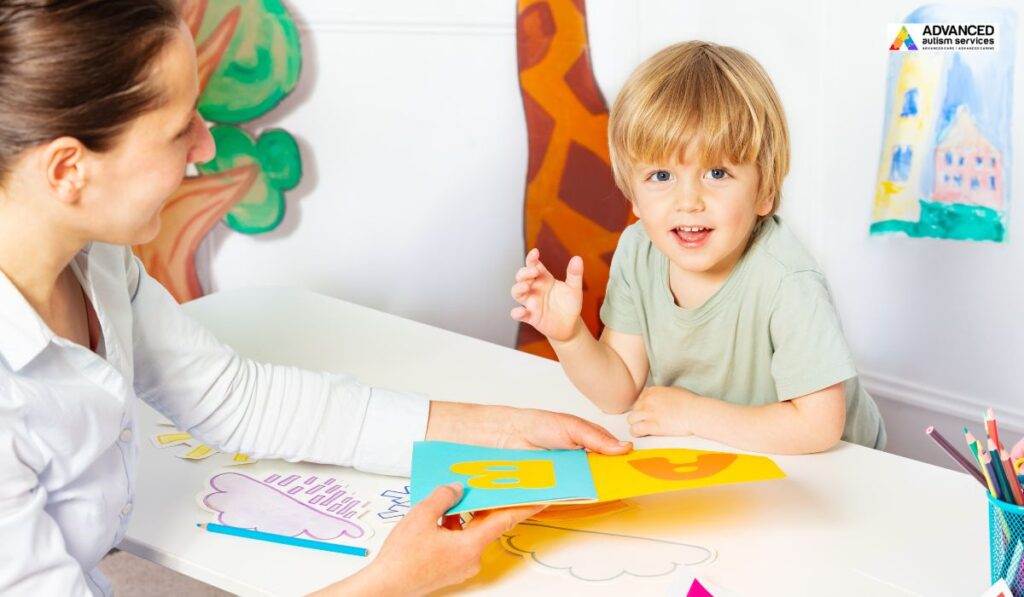In today’s digital age, children are growing up surrounded by screens and technology. While technology can offer numerous educational and entertainment opportunities, it also poses challenges, especially for children with autism spectrum disorder (ASD). Parents and caregivers of children with autism often grapple with the dilemma of managing their child’s screen time effectively. Striking a balance between beneficial use and potential drawbacks becomes crucial. In this article, we will explore practical screen time regulation tips specifically tailored for kids with autism, with insights from aba specialists who specialize in addressing the unique needs of individuals with autism.
Understanding the Challenges
Children with autism often exhibit unique receptive sensitivities, communication difficulties, and repetitive behaviors. These characteristics can impact how they interact with screens and technology. Excessive screen time may lead to receptive overload, difficulty in social interactions, and increased repetitive behaviors. To address these challenges, parents and caregivers need to implement thoughtful and individualized strategies.
Create a Structured Schedule
Children with autism thrive on routine and structure. Establishing a consistent daily schedule that includes designated screen time can provide a sense of predictability. Clearly outline when screen time is allowed, ensuring it complements other activities like schoolwork, outdoor play, and social interactions. The predictability of a routine can help reduce anxiety and foster a more positive screen time experience.
Use Visual Supports
Visual supports, such as visual schedules or social stories, can be powerful tools for children with autism. Create a visual schedule that includes designated screen time slots, helping your child understand when it’s appropriate. Social stories can explain the rules and expectations surrounding screen time, reinforcing positive behavior and setting clear boundaries.
Choose Educational and Purposeful Content
Opt for educational and purposeful content that aligns with your child’s interests. There is a plethora of apps, games, and videos specifically designed to support learning for children with autism. Seek out programs that focus on social skills, communication, and receptive integration. Balance entertainment with educational value to make screen time a beneficial experience.
Limit Stimulating Visuals and Sounds
Children with autism may be more sensitive to certain visual and auditory stimuli. Choose screen content with simple graphics, muted colors, and calming sounds. Avoid fast-paced, flashy visuals or loud, sudden noises that can trigger receptive overload. Paying attention to the receptive aspects of screen time can contribute to a more comfortable and enjoyable experience for your child.
Engage in Co-Viewing and Interaction
Make screen time a shared experience by engaging in co-viewing and interaction. Sit with your child and participate in the content together. Use screen time as an opportunity to reinforce social skills, communication, and joint attention. ABA Specialists recommend pausing the screen intermittently to discuss what’s happening or to encourage your child to express their thoughts and feelings. This simple strategy supports effective screen time regulation for kids with autism.
Set Time Limits and Use Timers
Establish clear time limits for screen use and communicate these limits to your child. Use visual timers or alarms to signal the end of screen time. Gradually reduce screen time duration if necessary, ensuring a smooth transition. Consistent time limits help prevent excessive use and encourage your child to engage in a variety of activities.
Encourage Outdoor and Physical Activities
Balancing screen time with outdoor and physical activities is crucial for the overall well-being of children, including those with autism. Create opportunities for your child to engage in receptive-rich experiences outdoors, promoting physical exercise and social interactions. This balance contributes to a healthier lifestyle and minimizes the potential adverse effects of prolonged screen time.
Monitor and Evaluate Content Regularly
As children grow and develop, their interests and needs evolve. Regularly monitor the content your child engages with and evaluate its appropriateness. Ensure that screen time remains aligned with their developmental stage and provides ongoing educational and social benefits.
Establish a Screen-Free Wind-Down Routine
Create a screen-free wind-down routine before bedtime to promote quality sleep. The blue light emitted by screens can interfere with the production of melatonin, affecting sleep patterns. Implement calming activities, such as reading a book or engaging in quiet play, to help your child transition smoothly from screen time to bedtime.
Collaborate with Professionals
Seek guidance from professionals, such as educators, therapists, and clinicians specializing in autism. Collaborate with them to tailor screen time regulations based on your child’s individual needs and challenges. Professionals can provide valuable insights and strategies to enhance your child’s screen time experience while addressing specific developmental goals.
Foster Social Connections Through Technology
While excessive screen time can have adverse effects, technology can also serve as a valuable tool for fostering social connections. Encourage your child to use video calls to connect with friends and family members. Virtual interactions can be a comfortable way for children with autism to practice social skills in a controlled environment. Ensure that these interactions are positive and supportive, emphasizing the value of maintaining relationships.
Be Mindful of Individual receptive Preferences
Every child with autism is unique, and their receptive preferences vary. Please pay attention to your child’s sensitivities and preferences when it comes to screen time. Some children may find certain textures or types of screens more comfortable, while others may prefer specific sounds or lighting conditions. Being mindful of these preferences can contribute to a more enjoyable and tailored screen time experience.
Collaborate with Educators for Consistency
Consistency is vital in supporting children with autism. Collaborate with educators to maintain consistency between home and school regarding screen time rules and expectations. Share information about the types of content that work well for your child and discuss any concerns or adjustments needed. A collaborative approach ensures a unified strategy to support your child’s development.
Use Screen Time as a Reward System
Implement a reward system to reinforce positive behavior and adherence to screen time rules. Establish a point or token system where your child earns points for completing tasks, exhibiting good behavior, or achieving specific goals. These points can then be exchanged for additional screen time or access to preferred content. This approach not only motivates positive behavior but also helps your child understand the concept of earned privileges.
Conclusion
In conclusion, effective screen time regulation for children with autism involves a thoughtful and individualized approach that considers their unique receptive sensitivities and communication challenges. By creating a structured schedule, utilizing visual supports, and selecting educational content, parents and caregivers can enhance the screen time experience for their children. Incorporating outdoor activities, setting time limits, and establishing a screen-free wind-down routine contribute to a balanced lifestyle. Collaboration with professionals and educators and a consistent reward system further support positive screen time habits. It’s crucial to remain mindful of individual receptive preferences, stay informed about technology trends, and model healthy screen time habits. By following these tips, parents can foster a positive and beneficial screen time experience for children with autism.
For personalized guidance and support, consider reaching out to ABA specialists. If you have any questions or would like to consult with professionals, please visit Advanced Autism Services for more information and assistance.
FAQs
Why is it essential to regulate screen time for children with autism?
Children with autism may have unique receptive sensitivities and challenges with communication and repetitive behaviors. Excessive screen time can lead to receptive overload, difficulty in social interactions, and increased repetitive behaviors. Effective regulation is crucial for a positive screen time experience.
How can I create a structured schedule for my child with autism?
Establish a consistent daily routine that includes designated screen time. Clearly outline when it’s allowed, ensuring it complements other activities like schoolwork, outdoor play, and social interactions. This routine provides predictability and reduces anxiety.
What are visual supports, and how can they help with screen time regulation?
Visual supports, such as visual schedules or social stories, are tools that can help children with autism understand and follow the rules. Create a visual schedule with designated screen time slots and use social stories to explain expectations, reinforcing positive behavior.
How do I choose educational and purposeful content for my child with autism?
Opt for apps, games, and videos designed to support learning for children with autism. Look for programs that focus on social skills, communication, and receptive integration. Balancing entertainment with educational value is critical.
What should I consider regarding visual and auditory stimuli during screen time?
Children with autism may be sensitive to certain stimuli. Choose content with simple graphics, muted colors, and calming sounds. Avoid fast-paced visuals or loud noises that may trigger receptive overload.
How can I make screen time a shared experience for better interaction?
Engage in co-viewing and interaction during screen time. Use it as an opportunity to reinforce social skills, communication, and joint attention. Pause intermittently to discuss the content and encourage your child to express thoughts and feelings.
How do I set time limits for screen use and transition smoothly?
Establish clear time limits and use visual timers or alarms to signal the end of screen time. Gradually reduce duration if necessary. Consistent time limits prevent excessive use and encourage engagement in various activities.
Why is it important to encourage outdoor and physical activities?
Balancing screen time with outdoor activities is crucial for overall well-being. Create opportunities for receptive-rich experiences outdoors, promoting physical exercise and social interactions.
How can I monitor and evaluate screen content for my child?
Regularly monitor the content your child engages with and evaluate its appropriateness. Ensure it aligns with their developmental stage, providing ongoing educational and social benefits.
Why should I collaborate with professionals in regulating screen time?
Seek guidance from educators, therapists, and clinicians specializing in autism. Collaborate to tailor screen time regulations based on your child’s individual needs and developmental goals.




